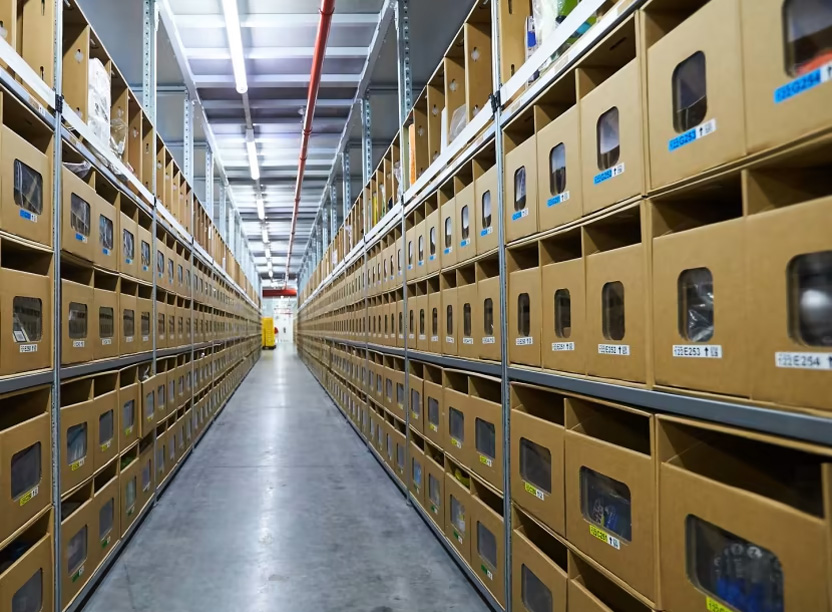Warehousing has come a long way from just providing a physical storage space for goods. It is now an essential part of the logistics and supply chain management process. Warehousing involves a wide range of activities such as storage, handling, and movement of goods, as well as packaging, labeling, and inventory management. With the help of modern technology, warehousing has become more efficient, faster, and more cost-effective. The use of warehousing offers many advantages for businesses. Firstly, it provides a secure and safe space for goods storage. Secondly, warehousing helps businesses to reduce costs associated with inventory management, such as labor costs, transportation costs, and material handling costs. Thirdly, it allows businesses to optimize their supply chain operations, providing a more streamlined and efficient logistics process. Lastly, warehousing improves customer service by ensuring timely delivery of products and reducing lead times. Overall, warehousing plays a crucial role in the success of businesses by providing a safe and efficient storage space.
Advantages of Warehousing
AWL understands that warehousing provides businesses with numerous advantages. It also allows for efficient order fulfillment, enables businesses to store goods in a secure and controlled environment, and provides flexibility for businesses to scale their operations. Here is a list of advantages of warehousing:
1. Efficient Storage
Warehousing provides an efficient way to store goods, making it easy to access and retrieve them. Goods are organized in a systematic manner, ensuring that inventory is managed effectively, reducing the chances of stockouts and overstocking. This leads to a better flow of goods, saving time and reducing unnecessary expenses. Efficient storage also allows for better space utilization, which helps businesses to maximize their storage capacity, reduce clutter, and maintain a cleaner and safer work environment.
2. Cost-Effective
Warehousing helps to reduce the costs associated with inventory management, such as transportation and storage costs. By storing goods in bulk, businesses can take advantage of economies of scale and negotiate better prices with suppliers. This leads to cost savings that can be passed on to customers, ultimately improving the competitiveness of the business. Warehousing also allows businesses to optimize their supply chain management process by reducing transportation costs and enabling just-in-time delivery.
3. Risk Management
Warehouses provide a secure and safe environment for goods, protecting them from damage, theft, and other hazards. Additionally, warehouses can be insured to further mitigate risks associated with storing goods. This ensures that the business can continue to operate even in the face of unexpected events, minimizing potential losses. Warehousing also helps to maintain the quality of goods by providing controlled environments, such as temperature-controlled warehouses for perishable goods or hazardous materials.

4. Improved Customer Service
Warehousing helps to improve customer service by ensuring that goods are readily available for distribution or sale. This reduces lead times and increases order fulfillment rates, leading to higher customer satisfaction. Additionally, warehouses provide a central location for goods, making it easier to manage inventory levels and respond to customer orders quickly. This, in turn, helps businesses to improve their reputation and build long-lasting relationships with their customers.
5. Streamlined Supply Chain
Warehousing plays a crucial role in streamlining the supply chain process. By providing a central location for goods, warehouses make it easier to manage inventory levels, track goods, and coordinate with suppliers and distributors. This leads to a more efficient and effective supply chain, reducing the time and costs associated with the movement of goods. This also allows businesses to better manage their logistics and reduce the risk of supply chain disruptions.
6. Increased Flexibility
Warehousing allows businesses to respond quickly to changes in demand or market conditions. By storing goods in a warehouse, businesses can adjust inventory levels as needed, ensuring that they can respond to customer orders quickly. This increased flexibility helps businesses to remain competitive and adapt to changing market conditions. Additionally, warehouses can also be used for product assembly or customization, allowing businesses to offer more personalized products or services to their customers.
Conclusion
In conclusion, warehousing is a critical component of the supply chain process. It provides businesses with a safe and secure place to store goods, reduces costs associated with inventory management, and improves customer service. In addition, AWL introduces warehouse as a service (WaaS) as a cost-effective and flexible solution for businesses looking to outsource their warehousing needs. WaaS providers offer on-demand warehousing and supply chain orchestration services, allowing businesses to scale up their operations. This eliminates the need for businesses to invest in their own warehouse infrastructure, reducing capital expenditures and improving cash flow. Furthermore, advancements in technology, such as RFID inventory management solutions, have made it easier for businesses to manage their inventory and improve warehouse efficiency. With RFID technology, businesses can track inventory in real-time, reducing the risk of stockouts and overstocking.

Rituraj Pankaj
Tech Leader in Supply Chain Management




